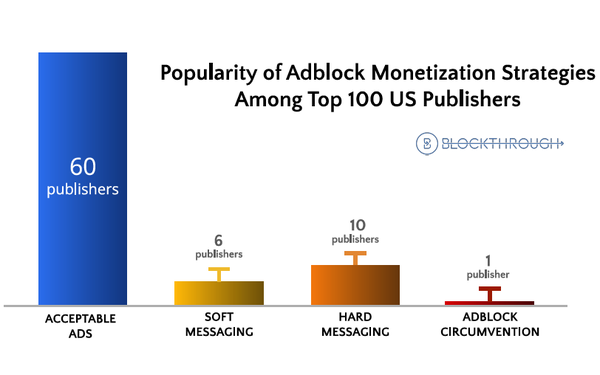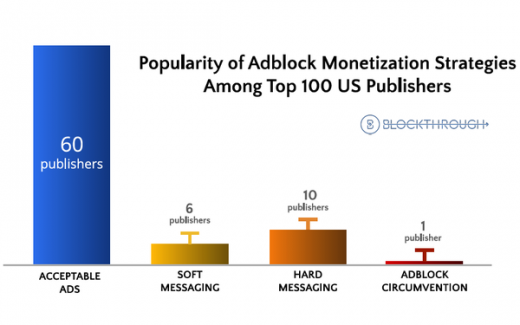Desktop Ad-Blocking Creeps Up, PageFair Reports
Desktop Ad-Blocking Creeps Up, PageFair Reports

Blockthrough, a technology company focused on helping publishers recover advertising revenue otherwise lost to ad-blocking software, has released research showing that desktop ad blocking rose 5% in 2021, with 290 million users worldwide.
Estimates are conservative, according to the study, and do not take into account wide-spectrum content blockers, VPN/DNS-based ad blockers, and network-level ad blockers
The average ad-blocking rate across geographical locations and verticals is 21%, as measured across more than 10 billion page views on 9,453 websites.
The 2022 PageFair Adblock Report suggests that desktop ad-blocking growth slowed overall between 2016 and 2018, and then declined between 2018 and 2020. In the United States, ad blocking rates came in at 19% — slightly lower than the global total of 21%.
In order to determine what prompted the decline, Blockthrough analysts focused much of this year’s report on ad-blocking walls, including a study that tested how users react when they encounter ad-blocking walls in the real-world, Marty Kratky-Katz, co-founder and CEO at Blockthrough, wrote in the report.
Findings in the study seem to validate survey findings from last year. About 80% of ad-block users say ad-block walls are an annoyance. The year, the company also included an ad-blocking world map, showing rate by country as recorded by its technology and analytics data.
Turns out that some of the highlights include 62% of the top 100 U.S. publishers were using at least one ad-blocking monetization strategy to reclaim advertising revenue in 2021. Interestingly, the use of ad-block walls as a standalone monetization strategy is in decline, with only one among the top 100 U.S. publishers relying on it.
About 82% of ad-block software users prefer a “lighter ad experience” by default compared with receiving prompts to disable their ad-blocker or whitelist a site.
Opt-in rate for Acceptable Ads has crossed 95% for the first time since the company began analyzing and reporting on its user base, and 94% of global publishers surveyed say they cannot precisely quantify the revenue loss incurred due to ad blocking
Combined ad-blocking rates in the U.S. came in at 19%, slightly lower than the global average of 21%. Rates in Australia, Canada and the U.K. were similar, at 19%, 20% and 18%, respectively.
The report also found that opt-in rates for Acceptable Ads exceeded 95% for the first time, totaling 216 million ad-block users on browsers and extensions that support it. This represents a 50% increase in user base from the beginning of 2019.
Another interesting point discussed in the study is ad filtering. A few years ago, ad-blocking was all or nothing. Today, ad-blocking technology allows non-invasive ads that comply with the Acceptable Ads Standard to serve to opted-in users.
Acceptable Ads are governed by the independent Acceptable Ads Committee, the Standard defines a lighter ad experience that is considered “acceptable” by at least 65% of surveyed ad-block users.
(24)


